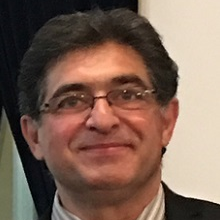Preprint
Article
Analytical Modeling of Residual Stress in Selective Laser Melting Considering Volume Conservation in Plastic Deformation
This version is not peer-reviewed.
Submitted:
16 November 2020
Posted:
17 November 2020
You are already at the latest version
A peer-reviewed article of this preprint also exists.
Abstract
Residual stress (RS) is the most challenging problem in metal additive manufacturing (AM) since the build-up of high tensile RS may influence the fatigue life, corrosion resistance, crack initiation, and failure of the additively manufactured components. While tensile RS is inherent in all the AM processes, fast and accurate prediction of stress state within the part is extremely valuable and would result in optimization of the process parameters in achieving a desired RS and control of the build process. This paper proposes a physics-based analytical model to rapidly and accurately predict the RS within the additively manufactured part. In this model, a transient moving point heat source (HS) is utilized to determine the temperature field. Due to the high temperature gradient within the proximity of the melt pool area, material experience high thermal stress. Thermal stress is calculated by combining three sources of stresses known as stresses due to the body forces, normal tension, and hydrostatic stress in a homogeneous semi-infinite medium. The thermal stress determines the RS state within the part. Consequently, by taking the thermal stress history as an input, both the in-plane and out of plane RS distributions are found from incremental plasticity and kinematic hardening behavior of the metal by considering volume conservation in plastic deformation in coupling with the equilibrium and compatibility conditions. In this modeling, material properties are temperature-sensitive since the steep temperature gradient varies the properties significantly. Moreover, the energy needed for the solid-state phase transition is reflected by modifying the specific heat employing the latent heat of fusion. Furthermore, the multi-layer and multi-scan aspects of metal AM are considered by including the temperature history from previous layers and scans. Results from the analytical RS model presented excellent agreement with XRD measurements employed to determine the RS in the Ti-6Al-4V specimens.
Keywords:
Selective Laser Melting
; residual stress
; direct metal deposition
; thermomechanical analytical modeling
; Ti-6Al-4V
Copyright: This open access article is published under a Creative Commons CC BY 4.0 license, which permit the free download, distribution, and reuse, provided that the author and preprint are cited in any reuse.
Downloads
232
Views
172
Comments
0
Subscription
Notify me about updates to this article or when a peer-reviewed version is published.
MDPI Initiatives
Important Links
© 2025 MDPI (Basel, Switzerland) unless otherwise stated







